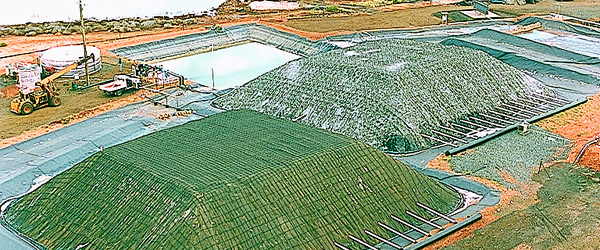The Workhorse of Hydrometallurgy
Posted 17 May 200

Stainless steel has earned a reputation as the material of choice for the mining and hydrometallurgical industries. This article discusses suitable grades and applications and the emerging opportunities for stainless steel in these industries.
Hydrometallurgy involves the extraction and refining of metals in aqueous solutions. It encompasses a range of processes such as leaching, solvent extraction, ion exchange, electrorefining, electrowinning, precipitation and solid/liquid separation for numerous metals including copper, zinc, nickel, cobalt, uranium, gold, silver, aluminium and rare earths. As stainless steel is the 'workhorse' material for many of these processes, especially those involving sulphuric acid solutions, hydrometallurgy is a significant market whose importance is growing as new processes are developed and applied.
HYDROMETALLURGY EXPANDING
Historically, metals extraction has been dominated by pyrometallurgical processes such as roasting and smelting, while hydrometallurgy has generally played a relatively minor role. However, since the 1950s, its role has expanded significantly, helped along by a string of new technical developments. These trends seem likely to continue as pyrometallurgical processes fall out of favour due to factors such as falling head grades, environmental pressure against gaseous emissions, the need to treat lower grades and impure ores, and the growing desire to add value by producing metals at the mine site. Significant growth areas for hydrometallurgy have been uranium ore processing in the 1950s, 1960s and 1970s, copper in the 1970s, 1980s and 1990s, and more recently nickel and cobalt.
TYPICAL APPLICATIONS
Uranium ores are almost exclusively treated by hydrometallurgy. The most common process is sulphuric acid leaching of finely ground material
at atmospheric pressure and temperatures up to about 800°C, followed by solid/liquid separation and solvent extraction or ion exchange. Stainless steels and high nickel alloys have been extensively used for tankage, pumps and piping.
Copper has traditionally been extracted from oxide ores by sulphuric acid leaching, either in agitated tanks or by spraying on heaps and dumps. Interest grew dramatically after the introduction of solvent extraction technology in the late sixties which, when coupled with electrowinning, enabled high grade copper cathode to be produced on site. More recently, this approach has been expanded to treat secondary sulphide ores such as chalcocite, and processes are now being developed for the treatment of chalcopyrite, the dominant copper mineral which is normally smelted. These new processes include pressure-oxidation, bio-oxidation and other novel leaching technology. Along with all of this has been the successful introduction of the use of stainless steel blanks for electrowinning and refining. Stainless steel is particularly suitable for copper in sulphuric acid solutions because of the inhibiting effect of copper in solution on corrosion.
Nickel and cobalt hydrometallurgy has been significantly boosted by a number of recent developments including the installation of new pressure acid leaching (PAL) operations for laterites in Western Australia, the first application of tank bio-leaching for cobalt recovery, the development of pressure-oxidation and bio-heap leaching technology for nickel sulphides. Although the PAL operations have had difficult start-ups, the PAL process is likely to become a major force in the future treatment of laterites because of its relatively low energy consumption and high nickel and cobalt recoveries.
| TYPICAL USES OF STAINLESS STEEL IN A NICKEL PAL PLANT | |
| STAGE | STAINLESS STEEL USED |
| Ore preparation and slurrying | Grade 310 or super duplex grades |
| Pressure leach circuit | Grade 310 or super duplex grades |
| Counter current decantation (ccd) circuit |
Tanks - grade 316 Rakes and rabble arms - grade 316 |
| Refinery (separating nickel, cobalt products, making metal) |
Process piping - grade 316 |
| TOTAL APPROXIMATE STAINLESS STEEL USAGE (PER MAJOR PLANT) |
6 000 TONNES |
BRIGHT FUTURE
Current trends undoubtedly point to an expanding role and bright future for hydrometallurgy in the mining and metallurgical industries. Along with this should come increased opportunity for the use of stainless steels.
Image: Nickel Heap Leaching trial at Radio Hill, WA.
This article was written by Alan Taylor, Chairman of consulting company International Project Development Services and convener of the ALTA Nickel/Cobalt 2001 (Perth, WA, May 15 - 18).
This article featured in Australian Stainless magazine - Issue 18, May 2001.